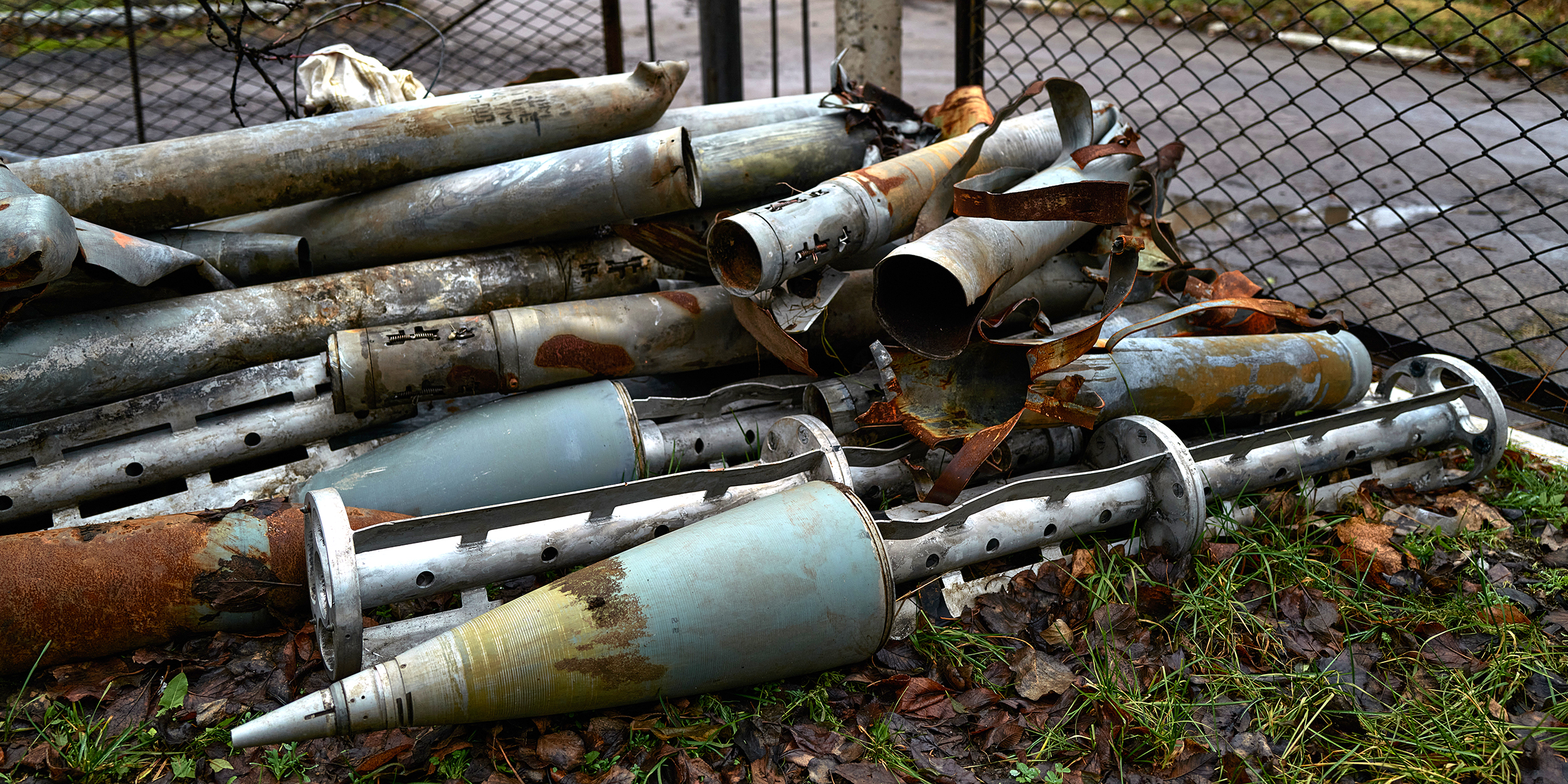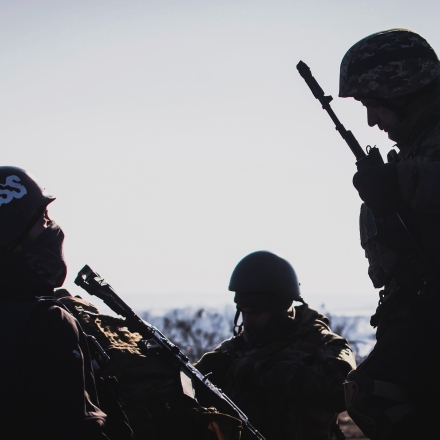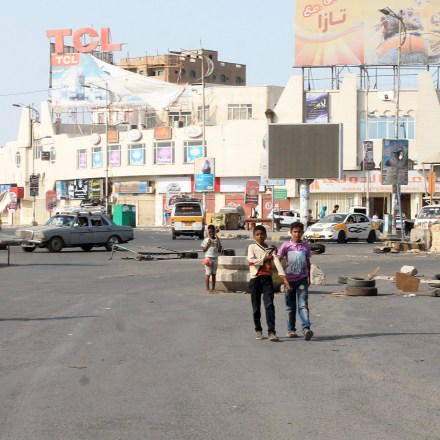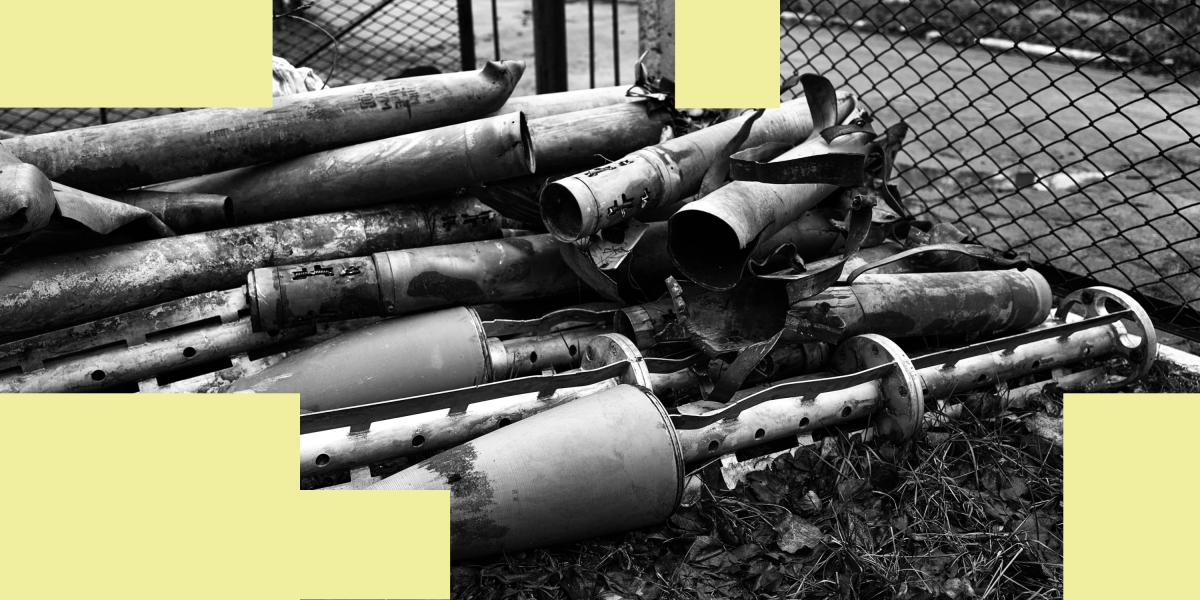On the morning of July 22 last year, a Ukrainian woman living in the town of Izium, then occupied by invading Russian troops, was killed in shelling launched by the Ukrainian military. The bomb that killed her was no ordinary weapon.
According to investigators from Human Rights Watch, who visited the scene of the attack, her death was caused by a cluster munition, a weapon much of the world has moved to ban due to the indiscriminate harm that they cause to civilians. The salvo was allegedly fired from the Ukrainian side, according to witnesses, and detonated near the woman’s home, killing her and her dog.
“The attack was very scary. Very loud. I was outside and there were a lot of explosions. The wife of my ex-husband came and told me to hurry to get inside,” one witness told Human Rights Watch, according to a report released late Wednesday night. Another witness, who viewed the victim’s body in the aftermath and helped bury her in a local cemetery, said that her “face and body were severely mutilated by the explosion.”
“Ukrainian cluster munition rocket attacks in the city of Izium in 2022 killed at least 8 civilians and wounded 15 more.”
As the Ukraine war drags on, the Biden administration is now reportedly in the final stages of deciding whether to send more of the bombs to the Ukrainian military. The decision to supply cluster munitions to Ukraine would likely be seen as a setback to nonproliferation efforts aimed at stopping use of the weapon.
The report by Human Rights Watch analyzing the impact of previous cluster munition attacks carried out last summer by the Ukrainian military found numerous dead and wounded civilians in Izium who were hit by exploding cluster bomblets.
“Ukrainian cluster munition rocket attacks in the city of Izium in 2022 killed at least 8 civilians and wounded 15 more,” the report said, adding that the true number of casualties was likely greater, as many wounded people had been taken to Russia for medical care and not returned.
Although investigators found forensic evidence pointing to Ukrainian culpability, the Ukrainian defense ministry said in a written letter to Human Rights Watch that “cluster munitions were not used within or around the city of Izium in 2022 when it was under Russian occupation.” The town was liberated by Ukrainian forces in the fall of that year.
The Ukrainian military is currently engaged in a much larger counteroffensive aimed at reclaiming other territories captured by Russia following Vladimir Putin’s invasion of the country in early 2022.
According to the Washington Post, the administration has recently been taking the temperature of members of Congress on the forthcoming decision. House Armed Services Committee Ranking Member Adam Smith, D-Wash., said he was open to giving Ukraine the weapons. When asked by The Intercept, a number of House Democrats declined to say whether they were for or against the move.
The move to transfer cluster munitions to the Ukrainian military comes on the heels of other U.S. initiatives to train Ukrainians on advanced fighter aircraft, and possibly provide them long-range missiles capable of striking deep into Russian-held territory. The transfer of cluster bombs to the Ukrainians would be much more ethically fraught.

Photo: Justin Yau/Sipa via AP Images
Banned Cluster Munitions
Cluster munitions are controversial due to the manner in which “bomblets” are scattered around a targeted area, creating secondary explosions that can cause death and injury even long after a conflict has ceased.
The use of cluster attacks during the 2006 Israeli war in Lebanon killed and wounded hundreds of civilians. A decade later, swaths of southern Lebanon are still dangerous for civilians who are periodically killed or maimed by stray bomblets.
The bombs are currently at the center of an international campaign to ban their use in armed conflict. More than 100 states have signed an international convention on cluster munitions vowing not to employ them in war, produce them domestically, or encourage their use in foreign conflicts. Despite public pressure to join, the U.S. has not become a signatory to the convention.
The Russian military has also extensively used cluster munitions during its invasion of Ukraine, including in attacks on populated areas that were said to have killed and wounded hundreds of civilians in the early months of the war.
The Ukrainian military was reported to have requested significant transfers of the munitions late last year, though the Biden administration did not render a decision on the request at the time.
If the decision is taken to approve the transfer of cluster bombs to Ukraine now, it may reflect frustration with the pace of the Ukrainian offensive, which has so far failed to make significant gains against Russian forces in the country.
In their report analyzing the impact of Ukrainian cluster bomb attacks on civilians in the occupied town of Izium, investigators from Human Rights Watch noted the potential long-term impacts of untargeted, explosive bomblets left around the region and called on both sides to refrain from their use — lest they kill and injure many more in the years to come. As the conflict grinds on, a legacy of unexploded cluster munitions could keep the suffering of the war going long after the guns go silent.
“Cluster munitions used by Russia and Ukraine are killing civilians now and will continue to do so for many years,” said Mary Wareham, advocacy director of the Arms Division at Human Rights Watch, in the report. “Both sides should immediately stop using them, and not try to get more of these indiscriminate weapons.”








